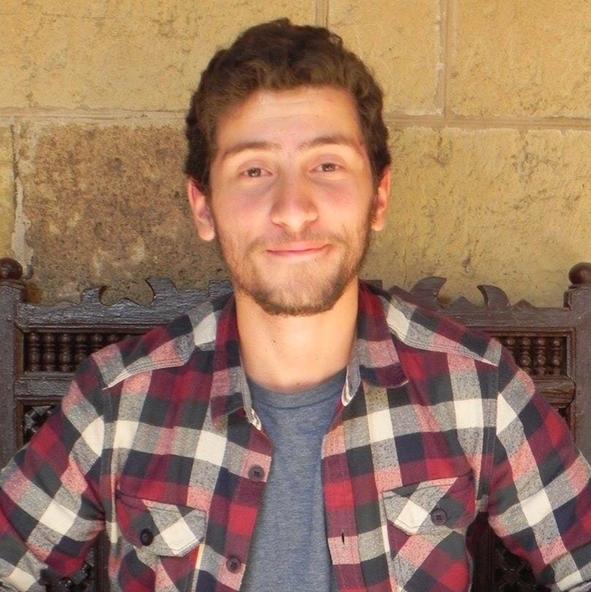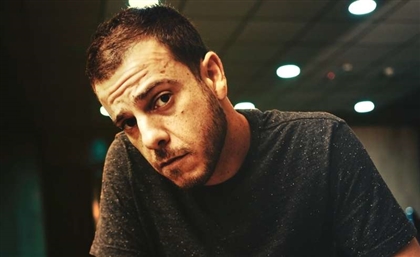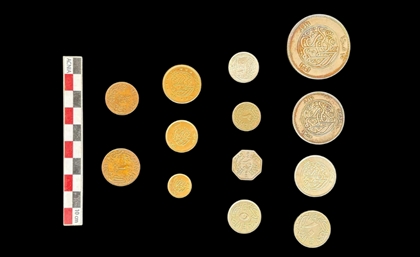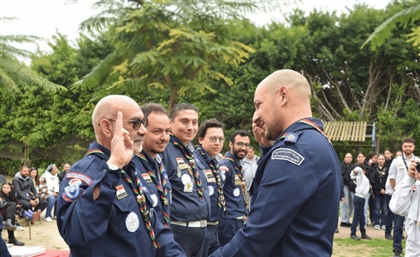Apartheid Architecture: The Violent Urban Design in Occupied Palestine
Israeli architect Eyal Weizman, author of ‘Hollow Land’, explains how urban design is exploited against the Palestinian people.
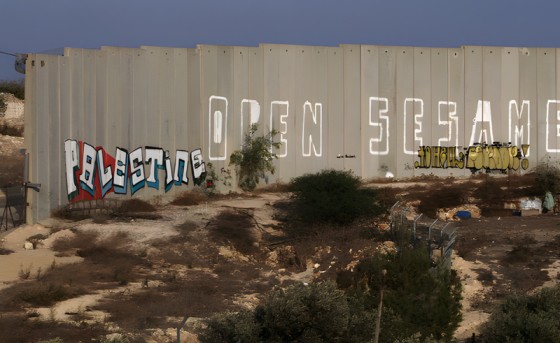
Architecture shapes our cities and dictates how we live. In occupied Palestine, it’s used to create urban hell. Drawing boards envision division, buildings are weapons of war, and roads are paved to strangle neighbourhoods - all of which is documented by Eyal Weizman, an Israeli architect and author of ‘Hollow Land’, which explores the urban design of apartheid in Palestine.
In ‘The Architecture of Violence’, a documentary directed by Ana Naomi de Sousa that aired on Al Jazeera as part of the ‘Rebel Architecture’ film series, Weizman explores the intersection of architecture, destruction and violence by highlighting how occupation has slowly created an environment that strangulates Palestinian communities.
-d97944ba-67c6-4e66-93a3-f13eac2f0fa8.jpg) “It created an environment that’s unlivable,” Weizman says. “The crime was done on the drawing board. Settlements have been built like wedges that consciously create material damage, cutting apart the fragile Palestinian built fabric. This is architecture used by architects as a weapon.”
“It created an environment that’s unlivable,” Weizman says. “The crime was done on the drawing board. Settlements have been built like wedges that consciously create material damage, cutting apart the fragile Palestinian built fabric. This is architecture used by architects as a weapon.”
While overlooking a panoramic view of both settlements that sit on top of hills and the Palestinian valley they survey, Weizman decodes the tactical tools used within the ‘architecture of occupation’. “We’re looking at a battlefield and the weapons are very simple elements; they’re trees, terraces, houses, claddings and barriers.”
As he drives over a Palestinian valley, Weizman explains, “The architectural principle of Israeli occupation is maintaining separation and exercising control. These are roads that simply serve colonies and settlements.”
-e5957dec-82e3-46fd-9fbb-77ac596a8c29.jpg) Normally, when we think about borders, a single image comes to mind: one large wall. However, what separates Israeli and Palestinian developments is much more of a cluster of urban elements. “In this frontier, the border is splintered into various devices,” Weizman explains. “There are fences around settlements, blockades around Palestinian cities, highways operate as borders, checkpoints are placed in sterile areas, and other devices that shrink and expand the terrain at will.”
Normally, when we think about borders, a single image comes to mind: one large wall. However, what separates Israeli and Palestinian developments is much more of a cluster of urban elements. “In this frontier, the border is splintered into various devices,” Weizman explains. “There are fences around settlements, blockades around Palestinian cities, highways operate as borders, checkpoints are placed in sterile areas, and other devices that shrink and expand the terrain at will.”
The crime of Israeli settlements isn’t merely the fact that they go against international law or strip Palestinians of their homes; it’s their contribution to the maintenance of fear and repression. Don’t simply ask why they’re being built but also where? “The main reason they are built on hilltops is for them to dominate the surroundings,” Weizman says.
-86d76d5d-da04-4690-8e52-e26ee9b8a69e.jpg) Most of the settlement buildings have a shared typology that varies from single to two-storey family houses. Their sloped roofs are intentionally covered with coloured roof tiles to allow fighter jets to recognise where they can bomb and where not. “These houses are like an optical instrument, when they’re laid in rings around the hilltops they’re like a suburban scale optical device that can survey the entire territory around it,” Wiezman explains.
Most of the settlement buildings have a shared typology that varies from single to two-storey family houses. Their sloped roofs are intentionally covered with coloured roof tiles to allow fighter jets to recognise where they can bomb and where not. “These houses are like an optical instrument, when they’re laid in rings around the hilltops they’re like a suburban scale optical device that can survey the entire territory around it,” Wiezman explains.
Another form of apartheid architecture is found in the roads network. “To control a space, you need to create differentiation in speed of movement,” Weizman says. While Israeli colonies are situated on highways to facilitate quick circulation, things aren’t the same on the Palestinian side.
“In every twist and turn of the terrain, Palestinians would encounter a border, a checkpoint, a fence, a valley they can’t cross. Sometimes you can read politics on the most mundane of architectural elements,” Weizman adds, referring to turnstiles used in checkpoints. “They’ve reduced the arm of the turnstile for it to press against the body. But that creates horrific situations when people would get caught up. So cruel and degrading, it reduces Palestinians to nothing more than bodies.”
Reminder, these checkpoints are mandatory for Palestinians. They have to pass through them on a daily basis to get to their homes, with some spending over seven hours stuck for no valid reason.
-22aed350-04bf-497c-bc0d-a300d7f9c012.jpg) When violence erupts, as is the case in Gaza as of the writing of this article, these carefully orchestrated environments come into play. Soldiers positioned on the hilltops (in the urban settlements) would move down into Palestinian towns, ushering in what Weizman refers to as the ‘Architecture of Destruction’.
When violence erupts, as is the case in Gaza as of the writing of this article, these carefully orchestrated environments come into play. Soldiers positioned on the hilltops (in the urban settlements) would move down into Palestinian towns, ushering in what Weizman refers to as the ‘Architecture of Destruction’.
In 2002, the Israeli Army invaded the Jenin refugee camp in the Occupied West Bank. They entered the city using D9 bulldozers, carving out new avenues and flattening homes. “They cut new streets through the dense urban fabric to allow tanks to come in,” Weizman says. “It was the first time that bulldozers were integrated into the battlefield, and became the means of fighting in Palestinian urban fabric.” The attack on Jenin and Nablus, was used as a “laboratory for the United States to think of urban warfare in Iraq,” according to Weizman.
‘The Architecture of Violence’ features Lt. Colonel. Shimon Naveh, a retired military philosopher, proudly explaining these tactics. “We leave the streets empty and enter the buildings by drilling holes in the walls,” he says.
“What they are actually doing is that they’re turning private and public space upside down,” Weizman explains.
-eb3b03c6-ec85-48f4-8135-47bb6aa465b9.jpg) The invasion of the city took place through its homes and private spaces. Like worms navigating the interior of an apple, soldiers would cut through the dense urban clusters, jumping from the inside of one home to the other. When Jenin was rebuilt by its residents, they built a road wide enough for tanks, because they didn’t want their homes destroyed again.
The invasion of the city took place through its homes and private spaces. Like worms navigating the interior of an apple, soldiers would cut through the dense urban clusters, jumping from the inside of one home to the other. When Jenin was rebuilt by its residents, they built a road wide enough for tanks, because they didn’t want their homes destroyed again.
“When violence is enacted through architecture, architecture must rise to resist it. It becomes the most important evidence to read the contours of that violence by reconstructing the battle and what happened by looking very closely at the ruins,” Weizman says.
-9c4f3662-6f16-459c-b8f7-adddb317b385.jpg) Weizmann leads Forensic Architecture at University of London, a project that presents architectural facts as evidence in legal forums. They investigated the use of white phosphorus in Gaza, and Israel’s tactic of ‘Knock on Roof’ warnings where they fire a warning shot, announcing a three-minute evacuation countdown before actually striking a building full of families.
Weizmann leads Forensic Architecture at University of London, a project that presents architectural facts as evidence in legal forums. They investigated the use of white phosphorus in Gaza, and Israel’s tactic of ‘Knock on Roof’ warnings where they fire a warning shot, announcing a three-minute evacuation countdown before actually striking a building full of families.
“I think that to be an architect is not only to build but to use architecture as a way to interpret, protest and resist,” he says. At the start of his career, Weizmann was commissioned to showcase ‘Israeli architecture’ at the International Union of Architects congress in 2002. His exhibition was made up of, unsurprisingly, settlements. The support he received was withdrawn, the exhibition was cancelled and his message was censored. But he still got the world’s attention.
-4498c1e5-fec5-4996-9463-951c8b33f0a6.jpg) Weizman went on to work with the Palestinian Ministry of Planning and now works out of Beit Sahour, a town in Occupied West Bank, where he co-runs DAAR, Decolonising Architecture Art Residency, which was recently recognised at the Venice Architecture Biennale.
Weizman went on to work with the Palestinian Ministry of Planning and now works out of Beit Sahour, a town in Occupied West Bank, where he co-runs DAAR, Decolonising Architecture Art Residency, which was recently recognised at the Venice Architecture Biennale.
Photography Credit: The Architecture of Violence, Rebel Architecture
- Previous Article Italian-Palestinian Duo No Input Debuts Eponymous Electro EP
- Next Article Egyptian Embassies Around the World







